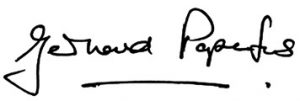ArcelorMittal fast becoming a dead weight on Industry
Virtual monopoly is protected at expense of downstream manufacturing in SA
An executive’s response to claims by AMSA’s CEO
THE VIEWS IN THIS ARTICLE SUBSTANTIATES NEASA’S PERSISTENT VIEW ON THIS ISSUE
This article was published by Sunday Times on 13 May 2018
There is no question that the South African steel sector is in crisis for all who are involved in it — by no means only its principal primary steel producer, ArcelorMittal South Africa.
While we continue to blame this longstanding crisis on China, it is important to look in the mirror and ask ourselves what we have done to reinforce and strengthen South Africa’s position.
There is no dispute as to the contribution the local steel industry as a whole makes to GDP, to the creation of jobs both directly and indirectly and to the fiscus.
It is imperative that we acknowledge and accept that South Africa operates in a global economy. It would be naive to believe the hypothesis that by importing steel we would be leaving both upstream and downstream industries at the mercy of the global steel market.
What is the alternative — leaving the downstream manufacturing and steel fabrication industries at the mercy of a perpetual loss-making monopolistic single local primary steel producer?
To think that having a single primary domestic steel producer lessens the risks to any downstream player by offering protection against raw-material market volatility is absurd.
Do we honestly believe that local pricing of steel would not be impacted by changes to the international price of raw materials used in the production of steel?
The words “import parity pricing” ring loud when casting one’s mind back to local steel pricing over past years!
ArcelorMittal has, since the demise of Highveld Steel, become a sanctioned de facto monopoly as far as steel production in South Africa is concerned — this, despite its ageing plant, dated technology and implicit production inefficiencies and reliability challenges.
So, instead of a full-blown modernisation and recapitalisation of the company, the Department of Trade and Industry introduced a 10% customs duty on hot rolled coil in June 2016, followed by a safeguard duty of 12% in August 2017.
So what has since happened to pricing and credit terms?
ArcelorMittal’s selling price of hot rolled coil quickly increased by amounts similar to both the customs duty and safeguard duties imposed on imports.
Over the past year, ArcelorMittal has unilaterally removed volumetric rebates to its larger customers/distributors of around 3% and imposed strict 30-day credit terms.
Basically, the South African consumer is funding this ageing, inefficient and financially burdened local steel producer, which recorded a loss of more than R5.1-billion in 2017 and a R4.7-billion loss in 2016.
Interestingly, over this comparative period, the ex-factory pricing of steel in US dollar terms increased by only 1.6% from deliveries from China and only 14.7% from Western European steel producers.
This, together with extended credit terms of up to 180 days to larger customers, is in stark contrast to the 22% price increase charged by ArcelorMittal on 30-day credit terms.
As long as ArcelorMittal continues to formulate pricing models that exclude China and other Asian countries, we will continue to face a pricing model not aligned to the global reality.
Protected steel price increases by ArcelorMittal significantly expose the South African downstream steel fabrication industry to the importation of competing finished products, as local fabricators cannot absorb the increased burden of comparatively higher input steel costs. This also opens the door to possibly the bigger threat of substitute steel products, namely cement, timber and speciality plastics.
The so-called increased risk of unreliable supply due to South Africa’s distance from the nearest steelmaking countries is simplistic. The reality is that primary steel products sourced globally can be landed in our ports and transported via road or rail with no business impact on planning, production, working capital and stock holding.
There is consensus that South Africa must increase its industrial manufacturing capacity to satisfy local demand while remaining competitive on the international market.
The imposition of customs and safeguard duties to protect our local primary steel producer has a negating effect on this strategic objective. It erodes South Africa’s ability to export steel fabricated products, places margin stresses on an already beleaguered downstream steel manufacturing sector, puts tens of thousands of jobs at risk and increases inflationary pressures — all of which contribute to a vicious cycle of a weaker local currency translating into even higher steel prices.
All-inclusive programme
A key starting point to fixing South Africa’s industrial manufacturing predicament is to have state-of-the-art, reliable and efficient primary steel producers capable of supplying high-quality steel at internationally benchmarked prices and terms.
ArcelorMittal’s piecemeal balance sheet restructuring and “patched” recapitalisations, together with protectionist local pricing, do not serve this purpose.
If South Africa seriously wants to accelerate activity in its steel sector, this needs to be an all-inclusive programme involving raw material producers, steel producers and downstream manufacturers and fabricators. Their fortunes are inextricably linked.
In the absence of an efficiently operating ArcelorMittal, imported steel coupled with extended payment terms remains a viable downstream manufacturing alternative for both the local and export markets, protecting the estimated 170 000 jobs provided by downstream industries.
Kind regards


